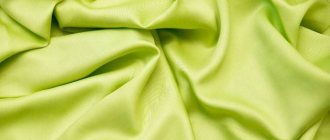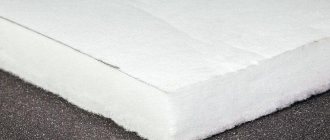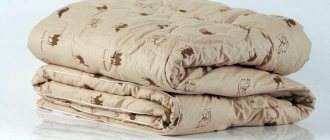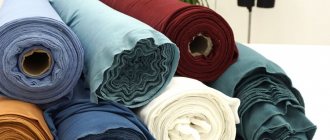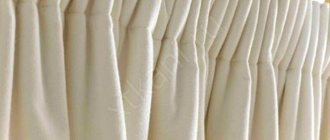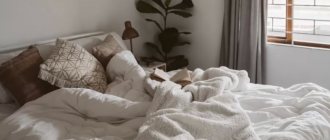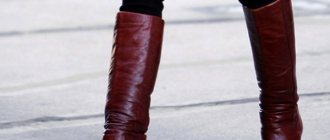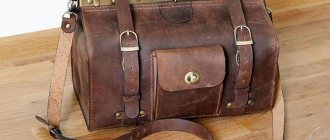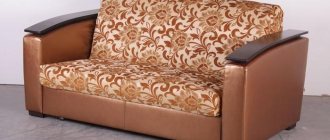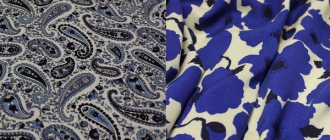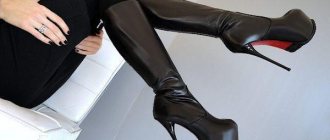Synthetic pillow fillings have become a part of our lives. In terms of their quality characteristics, they are not inferior to natural ones. After siliconization and antibacterial treatment, the materials acquire hypoallergenic properties, which allows them to be used by people prone to this disease.
What are synthetic pillow fillings?
Manufacturers offer a wide selection of synthetic fillers. Some of them have a foam-like structure and are used in orthopedic products. Others are based on hollow polyester threads, which are joined together using thermopolymer bonding. This type of filler includes
- padding polyester,
- holofiber,
- comfort,
- ecofiber.
Materials vary
- thickness and density of fibers,
- the degree of their twisting,
- the number of hollow channels inside the threads.
The quality characteristics of fillers and their cost depend on these parameters. The price of materials is affected by the quality and cost of raw materials. The higher they are, the more expensive the filler. The peculiarities of the technological process should also be taken into account. The more stages it includes, the more expensive the filler and the higher its quality.
Sintepon
This non-woven synthetic filler can be safely called universal. It is used not only in pillows, but also in blankets and bedspreads. It is used as insulation when sewing winter clothes.
High-quality padding polyester is made from primary raw materials - polyester fiber. It can withstand low temperatures perfectly, has a softness that provides comfortable sleeping conditions, and does not cause allergies. Pillows made from padding polyester are relatively inexpensive, but have a short service life. In just a year, the soft, airy pillow will be unrecognizable.
To obtain padding polyester, I often use the technology of processing recycled materials (for example, plastic bottles). This material is harmful to health. Differs from high-quality filler in dark brown color.
More details about the synthetic filler
Prices for padding polyester pillows
When choosing a pillow filled with padding polyester, you should test the product. Ideally, its height should be 5-15 cm; this parameter is selected individually. It is important to find your optimal value, because a mistake can result in headaches and neck fatigue. The ideal option is when the height of the pillow is equal to the length of the user’s shoulder.
When choosing a sleep accessory, you need to pay attention to:
- quality of tailoring, that is, the stitches must be even and consist of small stitches, otherwise the filler will start to come out;
- the material of the cover must be natural;
- lack of odor: the presence of an unpleasant aroma may indicate the use of low-quality raw materials in production.
How much does a padding polyester pillow cost?
The price of the product directly depends on its size, the volume of filler, as well as the material of the cover. You can buy a synthetic padding pillow at the following prices:
- 50x50: from 80 to 300 rubles;
- 50x70 and 60x60: from 100 to 500 rubles;
- 70x70: from 150 to 1000 rubles.
Holofiber
Synthetic filler, the quality characteristics of which are similar to the previous material, is used for pillows and blankets. Sometimes holofiber is called one of the varieties of padding polyester.
The material is hypoallergenic, light weight, soft and at the same time elastic. Pillows with holofiber are inexpensive, but their service life is longer than that of pillows with padding polyester. The products will retain their quality characteristics for 3–5 years.
More details about the filler in the video:
More details about holofiber filler
Thinsulate - the best filling for blankets
Thinsulate, a unique filling for blankets and pillows, differs from other types of padding polyester in the thinness of the fibers and their chaotic weave. Initially created for sewing suits for astronauts, then it began to be used for winter clothing, as well as sewing bedding sets for children and adults.
Thinsulate is 3 times warmer than any of the synthetic fillers listed above. It is able to keep you warm even when wet, and does not cake even after many washes. Accordingly, a much smaller amount of Thinsulate is required to make a lightweight yet warming blanket. For example, 1 cm of insulation can protect against frost down to -25 degrees.
Thinsulate is the best filling for duvets, but not an ideal choice for sewing pillows. The fact is that filling a pillow requires a large amount of fiber, and Thinsulate is not cheap.
Advantages:
- Excellent thermal insulation
- Hygienic, thin and soft
- Elasticity and durability (products last up to 10 years)
- Easy to wash and dry
- Resistance to fungi and microorganisms
Flaws:
- Very high cost (depending on density from 7 to 17 dollars per sq.m.)
- Not good for pillows
- Made from synthetic polyesters
- Not hygroscopic, takes a long time to dry
Comforel
Synthetic filler is small fibrous balls with a diameter of 5–7 mm. Recently, it has been widely used for pillows. It has gained popularity among customers due to its softness, elasticity, and hypoallergenic characteristics. Comforel is an inexpensive material, which has a beneficial effect on the cost of sleep products. It has the ability to retain heat well, which makes pillows popular in winter. The service life of the material is 3 years (even with frequent washing of the pillows).
More information about Comforel filler
Ecofiber
This synthetic filler is better known as artificial “swan down”. Ecofiber is considered one of the safest materials from an environmental point of view. It is recommended for use by people prone to allergies or with a weakened immune system. Ecofiber is 100% polyester, shaped like small hollow balls. Inside each of them there are up to seven channels filled with air, providing high thermoregulation of the material. Ecofiber is lightweight, soft, and elastic. The service life of ecofiber pillows is about 5 years.
More details about ecofiber filler
Natural raw materials
Such materials are widely used for padding, and they are always of natural origin. But those who suffer from allergies should not use some fillers.
In addition, pillows and headrests made from this raw material last a long time, but their prices are higher than those for the same padding polyester. They require special care and can be made from fibers of animal and plant origin (for example, horsehair).
Goose down and feathers
Instead of natural swan down, in our country they sell artificial one with similar properties. Goose feathers can be bought almost everywhere in Russia; they are obtained in the summer and spring months, when poultry moult. It retains heat well and at the same time does not accumulate moisture.
Geese that live in the north have more heat-resistant feathers.
A pillow stuffed with goose down or feather is comfortable to sleep on and easily regains its shape.
But there are other properties that may stop some from buying:
- the material must be cleaned with chemical compounds and dried thoroughly;
- fragility (due to the fragility of feathers).
In addition, an allergy to goose down is possible. Duck down is also often used for filling, although its properties are different: it is not as elastic and more rigid. This natural component can be used as an alternative to goose down. Before use, check for any allergic reaction.
Sheep's wool
The most accessible natural raw material, which has long been used to sew pillows. Wool retains heat and retains its shape and does not absorb moisture. But at the same time, it can become deformed and needs regular cleaning with powder and other means.
In addition, doctors do not recommend that asthmatics and allergy sufferers buy such a pillow with such a filling.
Bamboo filler
What is the best pillow filling? There are many materials, and bamboo has become one of them. It has been used for such purposes relatively recently. These are environmentally friendly raw materials from which high-quality pillows are made. Bamboo forests grow on their own, without being treated with pesticides, so the material is safe.
Research results have shown that bamboo has disinfecting properties. Dust does not accumulate in its fibers, moisture is not retained, and mold and bad odors do not form.
To understand how to choose a comfortable pillow for sleeping with filling based on reviews, you can read people’s responses about this and other materials. Bamboo is easy to care for; it can be washed in an automatic machine, but washing should be gentle.
To obtain pillow filling, the core is extracted from young bamboo stems. It is crushed and threads 20 cm long are made. However, with high air humidity, bamboo becomes less durable.
Benefits of fillers
Synthetic pillow fillings have quality characteristics that allow them to successfully compete with natural materials:
- are light in weight,
- soft,
- elastic,
- hygroscopic,
- perfectly restore shape.
Having undergone special processing synthetic materials
- are not electrified
- do not absorb foreign odors,
- do not cause allergies.
Pillows with synthetic fillings are inexpensive, which makes them the most popular on the market.
Flaws
Among the disadvantages of materials of this class, the main one can be called a short period of operation. Synthetic winterizer will become matted and lose its elasticity the fastest. In a year you can already think about replacing it. Comforel will last up to three years. Holofiber and ecofiber are considered the most resistant. Pillows with these fillings will last about five years.
If we are talking about purchasing a sleep product with orthopedic characteristics, it is better to avoid these fillers. They do not have such properties.
Reviews about artificial fillers
Customer reviews of pillows with artificial fillings are not always flattering, but they correspond to reality. Most consumers indicate a short service life. In order not to be disappointed in a year, you should not buy the cheapest products with padding polyester. If you expect to sleep on a pillow for five years, you should choose holofiber. There are more positive reviews about this material. Having chosen ecofiber if they are prone to allergies, buyers note that it really does not cause unpleasant reactions. Thanks to special processing, its hypoallergenic properties are at a high level.
Looking for an inexpensive pillow with artificial filling. Products with holofiber, ecofiber, and comforter will be a real find. They are soft, light, elastic, warm. If you decide to save money and buy a pillow with synthetic padding, get ready to buy a new one in a year. The service life of this material is significantly lower than that of more modern synthetic materials.
Types of pillow materials
Today there are many high-quality fillings for pillows.
Whatever filling you choose, it must meet the basic requirements:
- Be soft and comfortable;
- Maintain the head and neck in an anatomically correct position;
- Do not accumulate odors;
- Absorb and evaporate moisture to prevent your head from sweating;
- Do not cause allergies.
Different materials have these properties to a greater or lesser extent.
Animal fillers
Although many animals have fur, the most common types found in pillows are time-tested wool and bird down and feathers. They are unconditionally soft, but over time they can lose elasticity, fall off and require careful care.
- Pooh. Usually, the down cover of waterfowl - geese and ducks - is used for pillows. It is very light, soft and elastic. Retains heat and is delicately ventilated. A 100% down product is a premium product that will cost you a significant amount, but will delight you and give you comfort for many years.
- Feather. The stiffer part of a bird's plumage with a rigid shaft in the center. Typically, a mixture of down and feathers allows you to reduce the cost of the model without giving up all the advantages of this filler.
- Silk. A truly elite filler is natural silk fiber from the silkworm cocoon. A very gentle and comfortable material that does not cause allergies, has excellent air permeability and excellent head support. Silk pillows are used even for problems with the cervical spine, how gentle they are.
- Sheep's wool. The best option for winter nights or those who are always cold. The pillows are filled with fine wool from merino sheep. It is famous for the fact that it does not release heat and helps to quickly warm up, and you will not sweat on a woolen product, because. Wool fibers quickly absorb and evaporate moisture. For the filler to work well, we recommend covering it with a cotton or silk pillowcase.
- Camel's wool. In fact, it is not the hard wool of camels that ends up in the bed, but the combed inner fluff, which helps the animal withstand temperature changes in the desert. This material is elastic, comfortable, but heavy, suitable for sleeping on your side.
- Cashmere. The lightest down of Pakistani and Indian goats has long been associated with comfort, fine and elegant workmanship and luxury. If you are willing to spend any money on a healthy sleep, cashmere will be the smartest and most pleasant investment: goat down is pleasant to the touch, absolutely hypoallergenic, perfectly adapts to the weight of your head and does not pill for years. Many cashmere models are suitable for delicate machine washing, but it is better to dry clean the product.
Natural down is considered a premium filler and is elastic and soft
Purified sheep wool fiber provides warmth and comfort during sleep
Materials of plant origin
Fillers from the world of flora differ significantly more from each other than animal fibers in terms of elasticity, hardness and origin. By the way, if you are looking for a truly rigid model, you will find excellent options here.
- Latex. The material, unique in elasticity and density, is created from the sap of the tropical Hevea tree. It is heated and foamed, and once it hardens, it turns into a very comfortable springy foam that perfectly adapts to the shape of the head and neck. Latex products can be of different shapes (classic or wave), consist of a single layer of filler or many chopped pieces.
- Bamboo. Bamboo cellulose fiber has quickly gained popularity as a bedding filler. And all thanks to its unique softness, fine fiber and increased hygroscopicity. This pillow will not wrinkle, will not make you sweat in your sleep even on the hottest night, and is perfect for machine wash. Many of the properties of bamboo can be found in the lyocell blend filler.
- Soy foams. Unique foam filler based on soybean oil. Thanks to different additives, foam acquires different properties from memory effect to cooling capabilities. It’s especially nice that you can combine several foams in one model.
- Cotton. It is hardly worth talking in detail about the advantages of cotton fiber. It is not for nothing that it is used in the production of clothing, underwear, bed linen, towels and many other things. And as a head support, cotton performed well and quickly found fans. Cotton models are suitable for allergy sufferers and people with sensitive skin, and easily adapt to any head position during sleep.
- Eucalyptus. Another cellulose-based plant material is otherwise called Tencel. Its main difference is that the fibers inside are empty, thanks to which a 100% eucalyptus pillow will be light, breathable and very soft. Combed fibers require careful handling, so products based on them cost a lot.
- Linen. Linen fabric is difficult to confuse with others: it is a little rough and even rough, light and perfectly breathable, it is always comfortable and comfortable. But in bedding, linen reveals a completely different side. Fluffed fibers are used as filler; they are softer and airier, but retain all the advantages of linen fabric, as well as a dense layer of needle-punched flax, which increases the density and service life of the product.
- Husk. Still in demand, but rather an extreme filler. Hard buckwheat or cedar husks are definitely not suitable for every day. It should be used only as prescribed by a doctor. The main feature and value of this filling is a constant massage of the soft tissues of the head, neck and shoulders.
Most often, pillows use a monolithic layer of latex
Flax fiber has unique hygroscopic properties
Artificial fillers
It has long been believed, but synthetic materials are a compromise option that cannot compete with organic fibers and down. But modern technologies make it possible to create unique fillers in the laboratory. They are not only not inferior to natural ones, but also have a number of unique characteristics and advantages.
- Memory Foam. The most popular and incredible filler is artificial viscoelastic memory foam. It reacts to pressure and temperature and remembers the position in which you are on your back. What’s especially nice is that the memory foam is pressed down exactly as much as is needed for a comfortable sleeping position. Today it is very popular among manufacturers of orthopedic pillows, because from Memory you can make a model of any shape from a classic rectangular to a wave, anatomical with a recess for the neck and any other options. Those who like to sleep on their side and in the fetal position will especially appreciate the product with a high bolster.
- Holofiber. This is a lightweight, usually white material, consisting of many hollow fibers in the form of springs, they are very elastic and voluminous. Holcon is perfect for sleeping on your back and side. The fibrous structure of the material helps remove excess heat and moisture. It also does not cause allergies, and dust mites do not live in it.
- Polyester fiber. The inexpensive material often replaces down and plant fibers such as bamboo and cotton. In terms of properties, it is almost no different from natural analogues; it does not pill and does not lose elasticity. Typically, polyester items can be machine washed at different temperatures. There is only one weak point - service life. This model will have to be replaced within 2-2.5 years after purchase.
- Artificial swan down. Today you cannot find natural swan fluff in bedding accessories. And this is good! After all, to produce one adult product, 8-10 adult birds used to be destroyed, but today all the advantages of swan fibers are embodied in an artificial filler. It is odorless and does not cause allergic reactions, very elastic and comfortable. You can read more about the advantages of this material in our article.
- Polyurethane foam. A soft orthopedic pillow made of ecofoam is suitable for those who sleep on their back. If the model has bolsters of different heights, it will be comfortable to sleep on your side. Soft artificial polyurethane foam provides comfortable support, quickly restores its shape, and does not harbor microorganisms. In addition, the PPU model is inexpensive and can be easily replaced with a new one if it wears out.
- Microfiber. From the name it is clear that this material consists of tiny fibers that are 2-4 times thinner than the fibers of cotton, bamboo or wool. Microfiber has many advantages: it is light and airy, adapts well to loads, and lasts 4-5 years. The disadvantages include difficulty in care: to prevent thin fibers from matting, it is recommended to wash it at a temperature no higher than 30 degrees and not place it next to a hot radiator or fireplace.
- Polystyrene foam balls. Increasingly, buyers are paying attention to this filler, thinking that it can be used for sleeping. But they are usually filled with toys, throw pillows and maternity cuddles. Dense granules are not only too hard for soft tissues and the base of the skull, but also completely impermeable to air and moisture. Sleeping on such a surface will be uncomfortable and not useful.
Memory foam material optimally adapts to the curve of the neck
Artificial ecofoam is an affordable and convenient alternative to natural latex
